Tamatsukuri Onsen, a district nestled within Matsue City, Shimane Prefecture, struggling to attract affluent foreign tourists, is undertaking its new strategy for inbound business
Tamatsukuri Onsen - Renowned as the venerable birthplace of Japan’s natural hot springs, as meticulously documented in Shimane Prefecture’s ancient record, the Izumo Fudoki extolled Tamatsukuri Onsen as “the hallowed hot spring” where “one dip in the spring brings their skin improvement; two dips heal all their ailments.” This hallowed spa town recently embarked on its inbound tourism strategy.
Tamatsukuri is located two hours by air from Tokyo(Haneda), eight hours by bullet train and local railway, and 12 hours by night sleeper train (Sun Rise Izumo).
From the 16th to the 18th of October, the Tamatukuri Tourism Association carried out its pilot program. Named the “Ancient Tamatsukuri and Hot Spring Town Tour,” this initiative sought to illuminate the locale’s hot spring legacy, agate jewellery craftsmanship, and the profound historical tapestry interwoven with Japan’s mythological genesis. The program furnished a sublime occasion for a total of 10 participants, including American, Netherlander, and Sri Lankan, to immerse themselves in the town’s allure and hospitality, complete with lodgings in opulent ryokans.
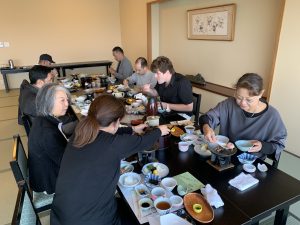
On the first day (Day1), the party visited a venerable local Shinto shrine, Tamatskuriyu Shrine, dedicated to three deities: One is the kami for bead-making; the others are related to the development of the place and the hot springs. The chief priest of the Shine prayed for the tour’s success.
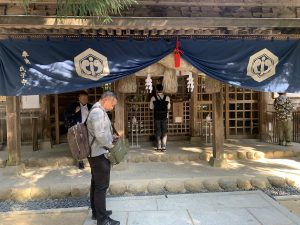
Then, they experienced meditation at Seiganji Temple which is dedicated to Amida Buddha and Hotei. The temple is also known for its Oshiroi Jizo statue, which is said to have healing for skin ailments. Not only healing of skin ailments but also meditation provides the temple the visitors.
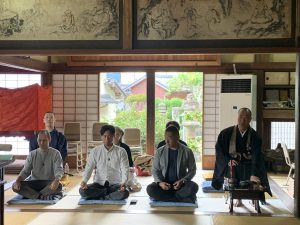
The following day (Day 2), the group mounted the ruin of the fortress, or the Tamatsukuri Yogai San Hilltop Castle, and Konpira Shrine. The mountain castle serves as a relic from the Japanese Sengoku Period (1467-1568). The monitors also had a rare opportunity to try medical herbal tea invented by Shimane University.
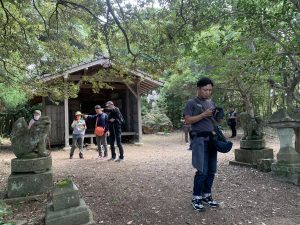
On the last day(Day 3), the travellers tried creating the local ceramic art called Yumachi Gama.
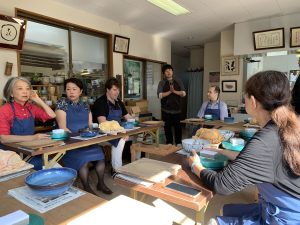
Despite the earnest trial program, the feedback procured from these discerning travellers was a bit trenchant.
Javus Olgun, a Netherlander currently residing near Tamatsukuri, suggested, “This tour is well-suited for Japanese locals familiar with the area’s history and culture. However, foreigners may not know much about it, which could make them lose interest. To make the program more exciting for them, it’s important to give them some background information in advance.”
In the wake of these cogent insights, Tamatsukuri Onsen will remain steadfast in its commitment to refining the program to revive its local economy.
Tamatsukuri Onsen is known for its hot springs and agate jewellery. Tamatsukuri Onsen has several hot spring sources and is said to have been discovered over 1300 years ago, making it Japan’s earliest recorded hot spring, according to a local topography, the Izumo Fudoki. This ancient record mentioned Tamatskuri Onsen as having the power to “rejuvenate your skin from the first soak, and heal any diseases on the second” and hailed as “the hot springs of the gods.” This reputation was said to attract those who wanted to soak in the hot springs.
After ancient times, only the upper ranks of the feudal government were allowed access to Tamatskuri Onsen during the feudal period. However, since the early 20th century, many serene and lively hotels and Ryokans, or traditional Japanese inns, have sprung up along the banks of the Tamayu River, where cherry blossoms colour in Spring. The spa town with hot springs attracted many visitors as one of Japan’s major spa towns in the Showa Era and remained somewhat desolate in the early 2000s.
To recover from this downturn, the town changed its strategy to promote skin enhancement offerings to attract young, wealthy, aspiring, beautiful Japanese women. However, COVID-19 has significantly impacted it, and promoting inbound tourism is now considered Tamatsukuri’s next survival strategy.
(Takashi Saito)

